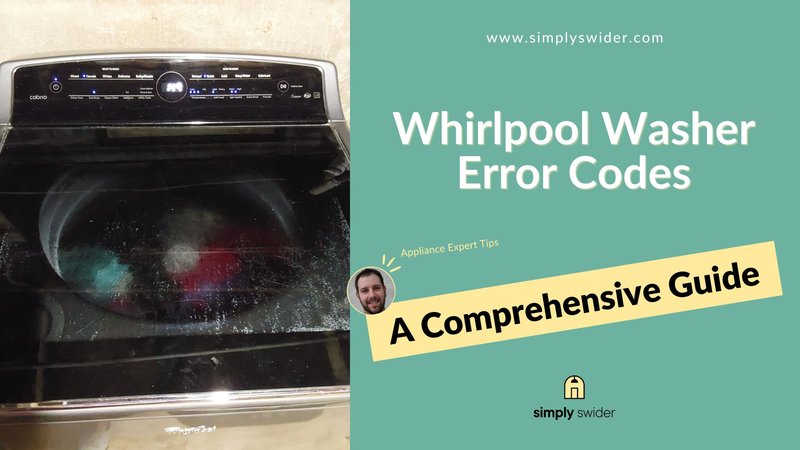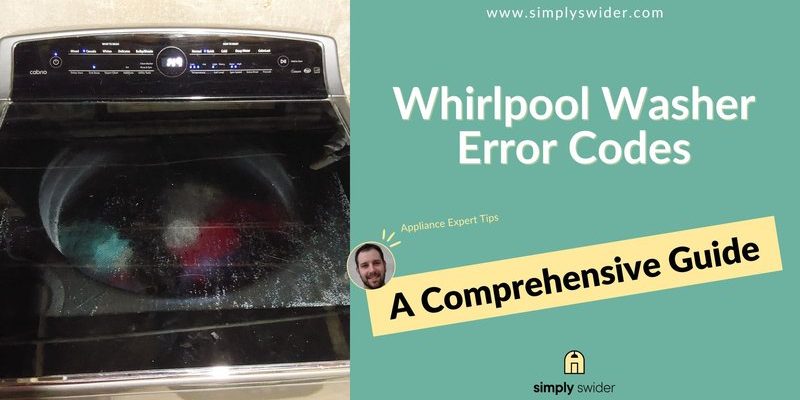
In simple terms, an E3 error code is your machine’s way of signaling that something’s not quite right with the drum’s rotation. It might sound technical, but think of it like this: just like a bicycle wheel that struggles to spin because of a jammed brake, your washing machine’s drum can encounter similar obstacles. Various factors could be at play here, from an unbalanced load to technical malfunctions. Understanding these causes can empower you to tackle the problem efficiently, saving you both time and unnecessary repair costs.
Understanding the Basics: What Causes an E3 Error?
Let’s dive into the nuts and bolts of what might be triggering the E3 error. One primary culprit is an unbalanced load. Imagine trying to ride a bike with a heavy backpack tossed onto one side; it would make steering and pedaling quite a challenge, wouldn’t it? Similarly, if the laundry inside your washing machine isn’t evenly distributed, the drum struggles to rotate properly. This imbalance can lead to your machine throwing the E3 error as a request for a little help in redistributing the weight.
Another potential cause is a problem with the motor. The motor is like the heart of your washing machine, pumping energy to get things moving. If the motor is struggling or has a minor glitch, it might cause the drum to rotate inefficiently, leading to an E3 code. This isn’t something you can easily spot without some technical know-how or the help of a professional.
Moreover, a faulty rotor position sensor can also be the sneaky cause of the E3 error. This sensor acts like the eyes and ears of your machine, sending crucial information about the drum’s position back to the control board. If it’s misfiring or disconnected, the machine might struggle to determine where the drum is supposed to be, triggering the code. It’s akin to trying to drive when your GPS isn’t showing you the way.
Troubleshooting: How to Fix the E3 Error
Now that we know what might be causing the E3 error, let’s explore how you can go about fixing it. First, tackle the most straightforward issue: the unbalanced load. Try redistributing the clothes inside the drum. If you’re washing heavier items like towels or blankets, mix them with lighter clothes. This is like balancing the weight on a see-saw—it needs to be even for the smoothest rotation.
If balancing the load doesn’t resolve the issue, the next step involves checking the motor. Unfortunately, this isn’t as simple as peeking under the hood. If you suspect a motor issue, the best move is to consult with a professional technician. They can determine if the motor has any faults or if it needs replacement. This step is crucial because, like a car engine, messing with the motor without adequate knowledge can lead to bigger problems.
Lastly, if you suspect the rotor position sensor is the culprit, it might be worth checking the wiring or connections, but only if you’re comfortable. A loose wire can often be fixed with a simple reconnection. However, if you’re unsure, again, it’s advisable to reach out to a professional. They can provide guidance or repair services to get everything back in working order.
Prevention Tips: Avoiding Future E3 Errors
Nobody wants to see an error code flashing on their appliance, so let’s talk prevention. To avoid an unbalanced load in the future, always try to distribute your laundry evenly. If you’re washing a lot of similar items, like sheets, try adding some smaller items to keep things on an even keel. Think of it like balancing a meal; you need a bit of both proteins and greens for harmony.
Regular maintenance of your washing machine can also prevent more serious issues down the line. Consider scheduling periodic check-ups with a technician to ensure everything is in top shape. This not only stops problems before they start but also extends the life of your appliance—kind of like regular doctor checkups for your health.
And finally, keep an ear out for unusual sounds during your wash cycles. Strange noises might be the first sign that something isn’t quite right, giving you a chance to address a minor issue before it becomes a major headache. The key takeaway? A little attentiveness can go a long way toward keeping your washing machine error-free.
